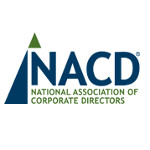 Archer Norris has published a first-of-its-kind California Business Litigation White Paper revealing that many corporate lawyers view California’s litigation environment as hostile, characterizing it as “burdensome,” “complex,” and “cumbersome.” While California was once widely considered by corporations to be the Promised Land because of the unlimited economic opportunity the state offered, its increasingly oppressive legal and regulatory environment means it is now getting panned by many businesses.
Archer Norris has published a first-of-its-kind California Business Litigation White Paper revealing that many corporate lawyers view California’s litigation environment as hostile, characterizing it as “burdensome,” “complex,” and “cumbersome.” While California was once widely considered by corporations to be the Promised Land because of the unlimited economic opportunity the state offered, its increasingly oppressive legal and regulatory environment means it is now getting panned by many businesses.
Conducted in partnership with ALM Marketing Services, Archer Norris’s survey polled general and corporate counsel with business interests in California on their opinions of the California legal climate, how they evaluate litigation matters, and how they choose outside counsel for handling these matters.
Compared to other states, corporate counsel reported three practice areas in California as particularly fraught with risk and potential liability: employment litigation (67%), environment/regulatory matters (59%), and commercial litigation (43%), with the first two most negatively impacting their decision to conduct business in the state. Other factors giving them pause about doing business in California include its judicial system (43%), state and local taxes (42%), environmental regulations (34%), and health and safety codes (30%).
Given their feelings about litigating in California – four in ten indicated they are simply “resigned” to the cost of doing business in the state – many corporate counsel indicated they struggle in deciding whether to settle cases or proceed to court. Forty percent of respondents were required to make such a call on ten or more matters within the last year. Counsel most often assessed the short-term odds of success in court versus reaching a favorable settlement (73%), followed by considerations of their legal exposure or the dollar value of a potential settlement (72%).
“As a law firm that has maintained a singular focus on helping businesses meet the unique challenges and opportunities in California for 35 years, we can’t say we’re surprised by these findings,” said Gene Blackard, Managing Partner. “In fact, we owe our continued growth and success to our ability to efficiently guide clients through California’s increasingly complex legal terrain. We have strategically developed our practices to meet the diverse litigation and transactional needs of companies doing business in the state, maintain offices in key geographic regions, and offer creative alternative fee arrangements to every one of our clients.”
The survey also yielded insights about how in-house counsel evaluate which outside counsel offer the right mix of skills and experience to handle the challenging California litigation environment. At the onset of a legal engagement, the most important factors include law firm responsiveness, knowledge of the business and industry, and overall litigation costs.
To download the Business Litigation Playbook white paper, please visit: http://www.archernorris.com/Templates/media/files/AN-Business-Litigation-Playbook-0615.pdf
About Archer Norris
A leading California law firm, Archer Norris PLC has more than 100 attorneys admitted to practice in 15 states. The firm focuses on business law from five strategically located California offices in San Francisco, Sacramento, Walnut Creek, Newport Beach and Los Angeles. Archer Norris counsels clients in commercial and complex litigation, insurance coverage, bad faith litigation, business, health care, public entity, environmental, and real estate transactions throughout California and wherever our clients need us.
 Oil industry technology has improved over the last five years since the BP drilling platform explosion and oil spill in the Gulf of Mexico, writes Mintek Mobile Data Solutions in a paper published on its website.
Oil industry technology has improved over the last five years since the BP drilling platform explosion and oil spill in the Gulf of Mexico, writes Mintek Mobile Data Solutions in a paper published on its website. A recent settlement by a private defense and government contracting company should put government contractors on notice of the corruption risks and the potentially severe consequences of FCPA violations, writes Fatema Merchant of Sheppard, Mullin, Richter & Hampton.
A recent settlement by a private defense and government contracting company should put government contractors on notice of the corruption risks and the potentially severe consequences of FCPA violations, writes Fatema Merchant of Sheppard, Mullin, Richter & Hampton. DLA Piper has published a paper about the Supreme Court’s ruling upholding a long-standing precedent that restricts the ability of a patent holder to charge a royalty beyond the term of a patent. In a 6-3 decision, the court in Kimble v. Marvel Entertainment declined to overrule Brulotte v. Thys Co., a 1964 decision in which the Court ruled that an obligation to pay royalties for use beyond the expiration of the patent was unenforceable.
DLA Piper has published a paper about the Supreme Court’s ruling upholding a long-standing precedent that restricts the ability of a patent holder to charge a royalty beyond the term of a patent. In a 6-3 decision, the court in Kimble v. Marvel Entertainment declined to overrule Brulotte v. Thys Co., a 1964 decision in which the Court ruled that an obligation to pay royalties for use beyond the expiration of the patent was unenforceable. Chinese companies are increasingly seeking out and paying for intellectual property via licensing agreements with American companies, writes Dan Harris in the Above the Law blog. He lists eight tips to assist American companies looking to secure royalty payments by licensing their IP to Chinese companies.
Chinese companies are increasingly seeking out and paying for intellectual property via licensing agreements with American companies, writes Dan Harris in the Above the Law blog. He lists eight tips to assist American companies looking to secure royalty payments by licensing their IP to Chinese companies. Archer Norris has published a first-of-its-kind California Business Litigation White Paper revealing that many corporate lawyers view California’s litigation environment as hostile, characterizing it as “burdensome,” “complex,” and “cumbersome.” While California was once widely considered by corporations to be the Promised Land because of the unlimited economic opportunity the state offered, its increasingly oppressive legal and regulatory environment means it is now getting panned by many businesses.
Archer Norris has published a first-of-its-kind California Business Litigation White Paper revealing that many corporate lawyers view California’s litigation environment as hostile, characterizing it as “burdensome,” “complex,” and “cumbersome.” While California was once widely considered by corporations to be the Promised Land because of the unlimited economic opportunity the state offered, its increasingly oppressive legal and regulatory environment means it is now getting panned by many businesses. The standards for walkway safety have changed – and the way slip and fall lawsuits are going to change with them, reports The Expert Institute.
The standards for walkway safety have changed – and the way slip and fall lawsuits are going to change with them, reports The Expert Institute. Many people believe that having a contract with Chinese companies is a waste of time and money because “everyone knows” that China never enforces contracts, writes Dan Harris in a posting on Above the Law.
Many people believe that having a contract with Chinese companies is a waste of time and money because “everyone knows” that China never enforces contracts, writes Dan Harris in a posting on Above the Law. Thousands of slip, trip, missteps and fall accidents and train collisions occur each year at railroad stations, terminals, and
Thousands of slip, trip, missteps and fall accidents and train collisions occur each year at railroad stations, terminals, and The National Association of Corporate Directors (NACD)
The National Association of Corporate Directors (NACD) Merrill DataSite offers a complimentary white paper on building an information governance policy and choosing a contract management system that will comply with your company’s policy needs.
Merrill DataSite offers a complimentary white paper on building an information governance policy and choosing a contract management system that will comply with your company’s policy needs. Venio Systems offers a complimentary white paper on defensibility problems due to spoliation of data between collection and review.
Venio Systems offers a complimentary white paper on defensibility problems due to spoliation of data between collection and review.